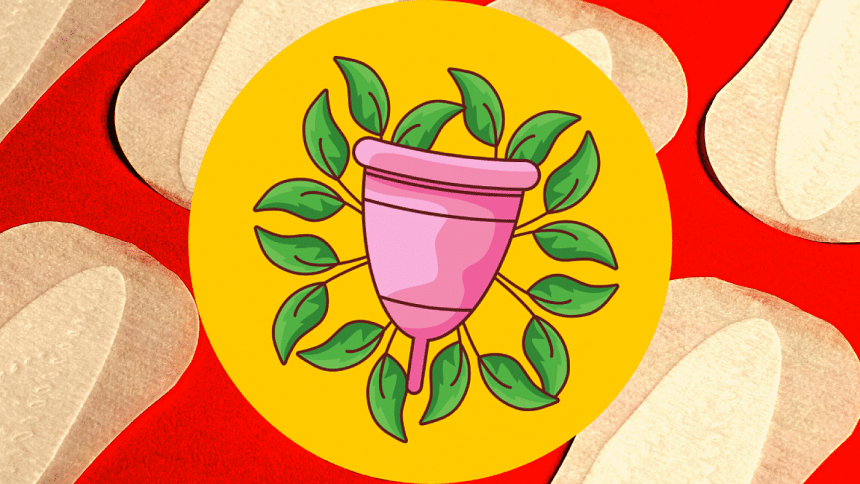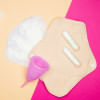A Case for Eco-Friendly Menstrual Products

While menstruation itself is a natural process, the disposable products used to tackle it can have a long-lasting and detrimental impact on the environment. This is where eco-friendly menstrual products come in. Not only are they safer, more hygienic, sustainable, and reusable, but they also provide more comfort and ultimately save the total cost of menstruation management.
MENSTRUATION AND SUSTAINABILITY
Although statistics vary, the general range suggests that people who menstruate use around 15,000 disposable period products in their lifetime. Around the world, the annual menstrual waste adds up to 100 billion disposables. The number of disposable pad users is on the rise in Bangladesh. Apart from convenience, the stigma associated with menstruation is also causing a rise in disposable usage, as they are more discreet than the reusable cloth pads used by the majority of menstruators.
The plastic packaging, individual plastic wraps each pad comes with and the leak proof layer all are made with non-biodegradable material that ends up in landfills and waste dumps, harming the environment for the next 500 to 800 years. Moreover, due to the stigma surrounding menstruation, some people find it easier to just flush their disposable sanitary napkins down the toilet than conducting a stealth mission to dispose of them without anyone else knowing. This results in a lot of waste in rivers and, eventually, the seas and ocean.
A BETTER ALTERNATIVE
Sustainable period products are eco-friendly products used for menstruation management like reusable cups, discs, cloth pads or period panties. Menstrual cups are small silicone cups used to collect menstrual fluid. Discs are similar in function, just shaped differently. Reusable pads and period panties are made with multilayer absorbent fabric that can be worn during periods and washed for reuse.
The medical-grade silicone used to produce reusable cups and pads do not react with menstrual fluid or release any toxic substances like artificial fragrance, residual pesticides from inorganic cotton or bleach into your body. So, in terms of safety, reusable products win easily.
Despite the daunting picture menstrual cups or discs create in your mind, it is far more comfortable than disposable pads or tampons. Once inserted correctly, it is impossible to feel its presence. Unlike disposable pads which can last up to 6 to 8 hours and tampons that last only 4 hours, menstrual cups have a 12-hour wear time. Considering the sticky feeling, bad odour, rashes and wear time disposable pads have to offer, menstrual cups can be an absolute dream when worn and fitted properly.
While disposable products are designed to encourage a lifetime subscription, one reusable cup or disc can be used for up to 10 years. Reusable pads can be used for up to 5 to 10 years. Although reusable products appear more costly, in the long run, they save a lot of money.
If not for the environment, for the sake of safety and comfort it offers and the sheer amount of money it saves, eco-friendly menstrual products are worth a try.
References
1. Campaign for Safe cosmetics (n.d.). Cumulative Exposure and Feminine Care Products.
2. Down To Earth (May 29, 2019). Is green menstruation possible?
3. National Geographic (September 6, 2019). How tampons and pads became so unsustainable.
4. The Period Lady (December 21, 2020). How Long Do Cloth Pads Last?
Tazreen wastes her time winning fake arguments in her head. Remind her to finish her argumentative essay instead at [email protected]

 For all latest news, follow The Daily Star's Google News channel.
For all latest news, follow The Daily Star's Google News channel. 









Comments